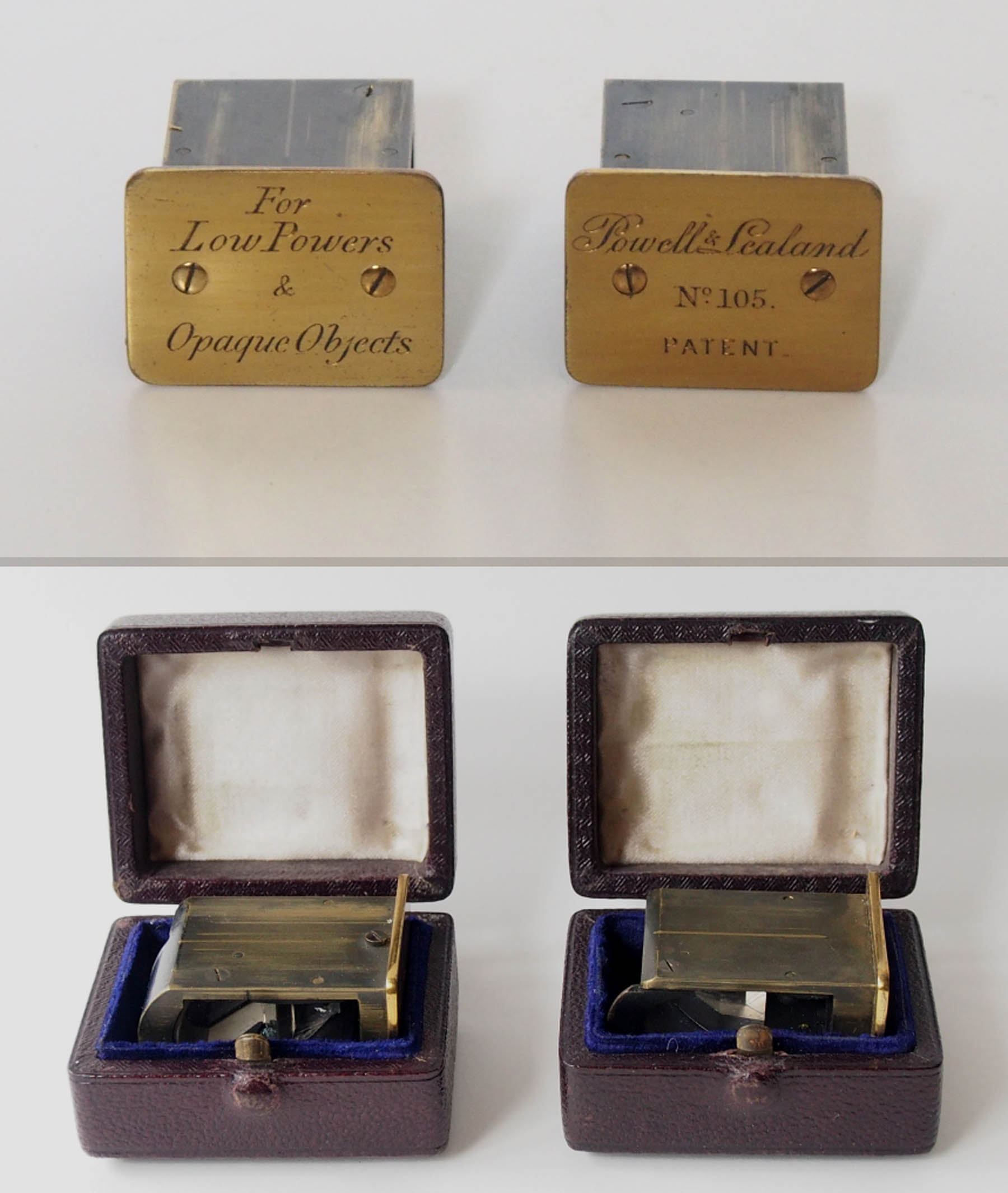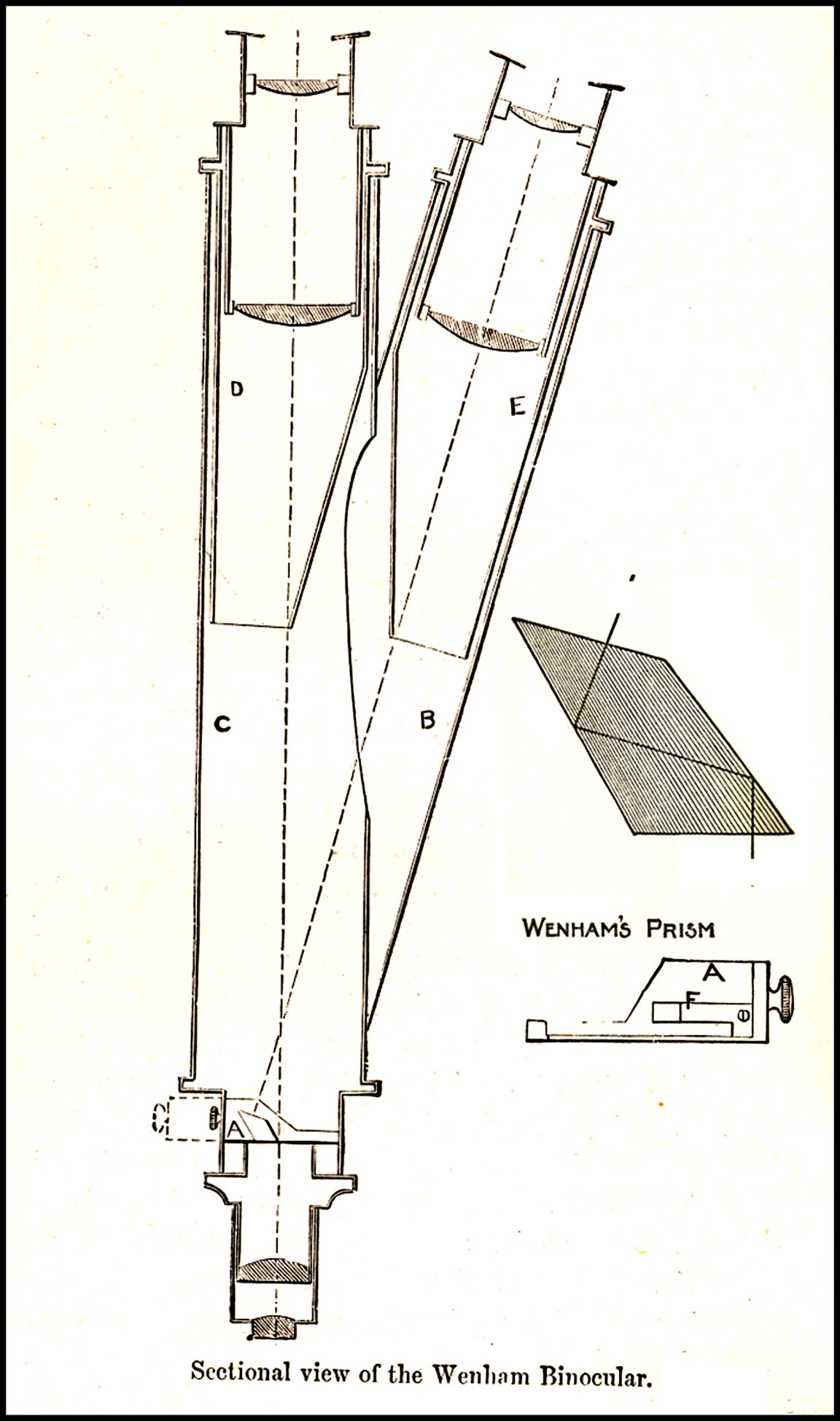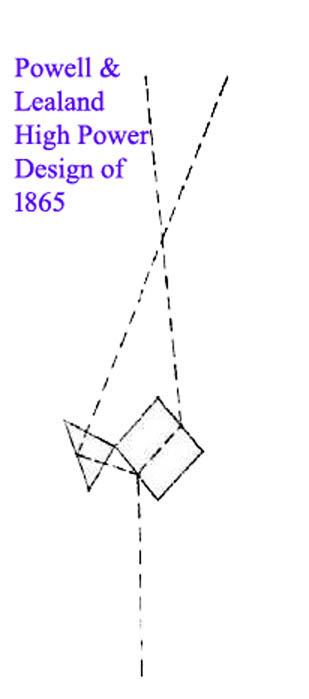

 As anyone who has used a microscope will tell you, it is much more comfortable to use a binocular microscope than an monocular one, especially for prolonged observations. Among binocular arrangements for the microscope, the Wenham Binocular dominated, starting from its invention in 1860, for many years. As originally designed, the prism for the Wenham binocular was suitable only for low powers and resulted in a 50% loss of numerical aperture. Depending on the author quoted, focal lengths as short as 1/2 an inch to 1/4 inch could be employed with this prism. There was also some asymmetrical illumination of one eye vs the other which worsened with higher powers. Once a focal length as short as one quarter inch is used, Wenham's original design does not perform very satisfactorily. Eventually various makers devised improvements in the prism arrangements to allow the use of the Wenham tube with higher power objectives. Among the designs used for higher powers was that of Powell and Lealand patented in 1865. That is the design of high power prism supplied with this microscope. These suffered severely from unequal illumination to the right vs left eye (6:1 difference in brightness). A truly practical symmetrical binocular design, usable with all powers, was developed by German makers in the first quarter of the twentieth century and futher improved as time went on. Part of the difficulty making good symmetrically illuminated binoculars that did not reduce the numerical aperture or reduce the brightness of the image was the difficulty of maintaining alignment, suitable coatings for reflective surfaces and making complex prisms accurately. Modern Binocular microscopes these days follow the plan of Jentzschke from 1913, as originally made by Leitz, or the plan of Siedenhoft from 1924, as made by Zeiss.
These are discussed in more detail on the History of Binocular Microscopes page.
As anyone who has used a microscope will tell you, it is much more comfortable to use a binocular microscope than an monocular one, especially for prolonged observations. Among binocular arrangements for the microscope, the Wenham Binocular dominated, starting from its invention in 1860, for many years. As originally designed, the prism for the Wenham binocular was suitable only for low powers and resulted in a 50% loss of numerical aperture. Depending on the author quoted, focal lengths as short as 1/2 an inch to 1/4 inch could be employed with this prism. There was also some asymmetrical illumination of one eye vs the other which worsened with higher powers. Once a focal length as short as one quarter inch is used, Wenham's original design does not perform very satisfactorily. Eventually various makers devised improvements in the prism arrangements to allow the use of the Wenham tube with higher power objectives. Among the designs used for higher powers was that of Powell and Lealand patented in 1865. That is the design of high power prism supplied with this microscope. These suffered severely from unequal illumination to the right vs left eye (6:1 difference in brightness). A truly practical symmetrical binocular design, usable with all powers, was developed by German makers in the first quarter of the twentieth century and futher improved as time went on. Part of the difficulty making good symmetrically illuminated binoculars that did not reduce the numerical aperture or reduce the brightness of the image was the difficulty of maintaining alignment, suitable coatings for reflective surfaces and making complex prisms accurately. Modern Binocular microscopes these days follow the plan of Jentzschke from 1913, as originally made by Leitz, or the plan of Siedenhoft from 1924, as made by Zeiss.
These are discussed in more detail on the History of Binocular Microscopes page.